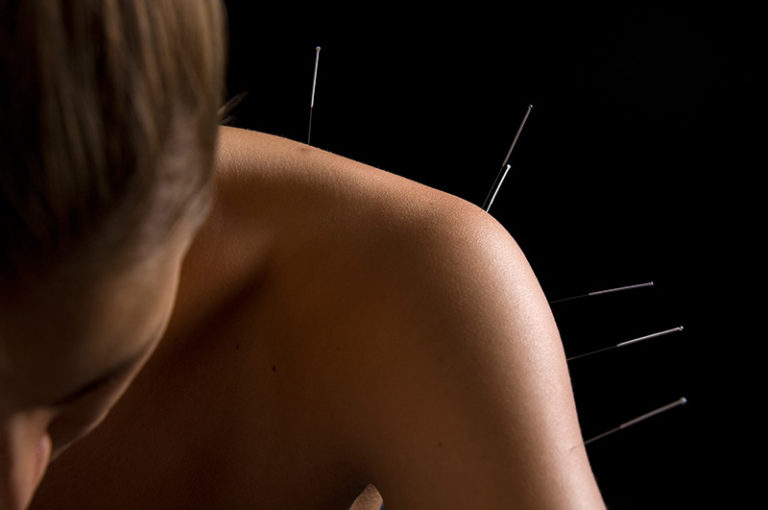
Raynaud’s Disease is a disorder that causes the arteries to constrict for brief periods, limiting blood flow to the extremities—typically the fingers or toes. Raynaud’s affects twice as many women as men, and its cause is unknown. Conventional treatment is limited to avoiding the cold and taking nifedipine, a drug that dilates small arteries and is more commonly used to treat angina. Although nifedipine reduces the severity of attacks by up to 90 percent, many patients discontinue therapy because of undesirable side effects.
The literature reveals that acupuncture is effective in improving pain severity and joint stiffness in Raynaud’s phenomenon.
About 5% of Americans have Raynaud’s, and its symptoms can be diagnosed as a disease, syndrome, or phenomenon, depending on its presentation and root cause. People with this disorder are prone to frequent vasospasms, or blood vessel constrictions, that make them unusually sensitive to cold. Their fingers may become stiff and turn white or blue if they go out in cold weather without gloves, or even if they hold an iced drink for too long.
Raynaud’s Syndrome occurs with exposure to cold temperature or emotional distress. It is believed to be the result of vasospasm that decreases the blood supply to the respective regions causing extreme vasoconstriction of the peripheral blood vessels, leading to tissue hypoxia. Raynaud’s Syndrome affects approximately 3–9% of the population and is more prevalent in the female population. It has been reported that acupuncture can induce a long-lasting reduction in attacks of RP.
Conventionally, patients will usually be given alpha blockers, calcium channel blockers, or antidepressants to improve circulation. The side effects of these drugs range from headaches and weight gain to anxiety and tissue swelling. When symptoms don’t improve with regular medication, doctors may suggest nerve surgery or injections.
How acupuncture can help patients with Raynaud’s Syndrome
Traditional Chinese medicine approaches to Raynaud’s are centered around improving the integrity of qi and blood in the superficial channels, and thereby increasing peripheral circulation.
Acupuncture is believed to stimulate the nervous system and cause the release of neurochemical messenger molecules. The resulting biochemical changes influence the body’s homeostatic mechanisms, thus promoting physical and emotional well-being.
Research has shown that acupuncture treatment may specifically help to relieve the symptoms of Raynaud’s by:
- Increasing local microcirculation (Komori 2009);
- Regulating endothelium-derived vasoconstrictors (endothelin-1) and vasodilators (calcitonin gene-related peptide, nitric oxide and nitric oxide synthase) (Wang 2011a; Wang 2011b; Pan 2010; Kim 2006);
- Reducing inflammation, by promoting release of vascular and immunomodulatory factors (Kavoussi 2007)
- Acting on areas of the brain known to reduce sensitivity to pain and stress, as well as promoting relaxation and deactivating the ‘analytical’ brain, which is responsible for anxiety and worry (Hui 2010; Hui 2009);
- Increasing the release of adenosine, which has antinociceptive properties (Goldman 2010).
Patients are suggested to find effective ways to cope with stress. Stress can exacerbate their symptoms nearly as much as cold temperatures, but almost everyone can find an activity that settles the mind and calms the nervous system. Typical activities may include meditation, various forms of gentle exercise, massage, or warm baths. All of these are beneficial for Raynaud’s patients for reasons beyond their stress reducing properties.
In 1999 a study was conducted to evaluate the effects of a standardized acupuncture treatment in primary Raynaud’s syndrome. Thirty-three patients with primary Raynaud’s syndrome were split into a treatment and control group. Participants in the treatment group were given seven acupuncture treatments over a winter period of 23 weeks at the angiological clinic of Hannover Medical School. Treated patients experienced relief and showed a significant decrease in the frequency and duration of attacks. The findings of this study, The Treatment of primary Raynaud’s syndrome with traditional Chinese acupuncture, suggests that traditional Chinese acupuncture is a reasonable alternative in treating patients with primary Raynaud’s syndrome.
Given that acupuncture is so safe, it should be considered as an alternative treatment or non-pharmacological therapy for pain associated with Raynaud’s phenomenon.


